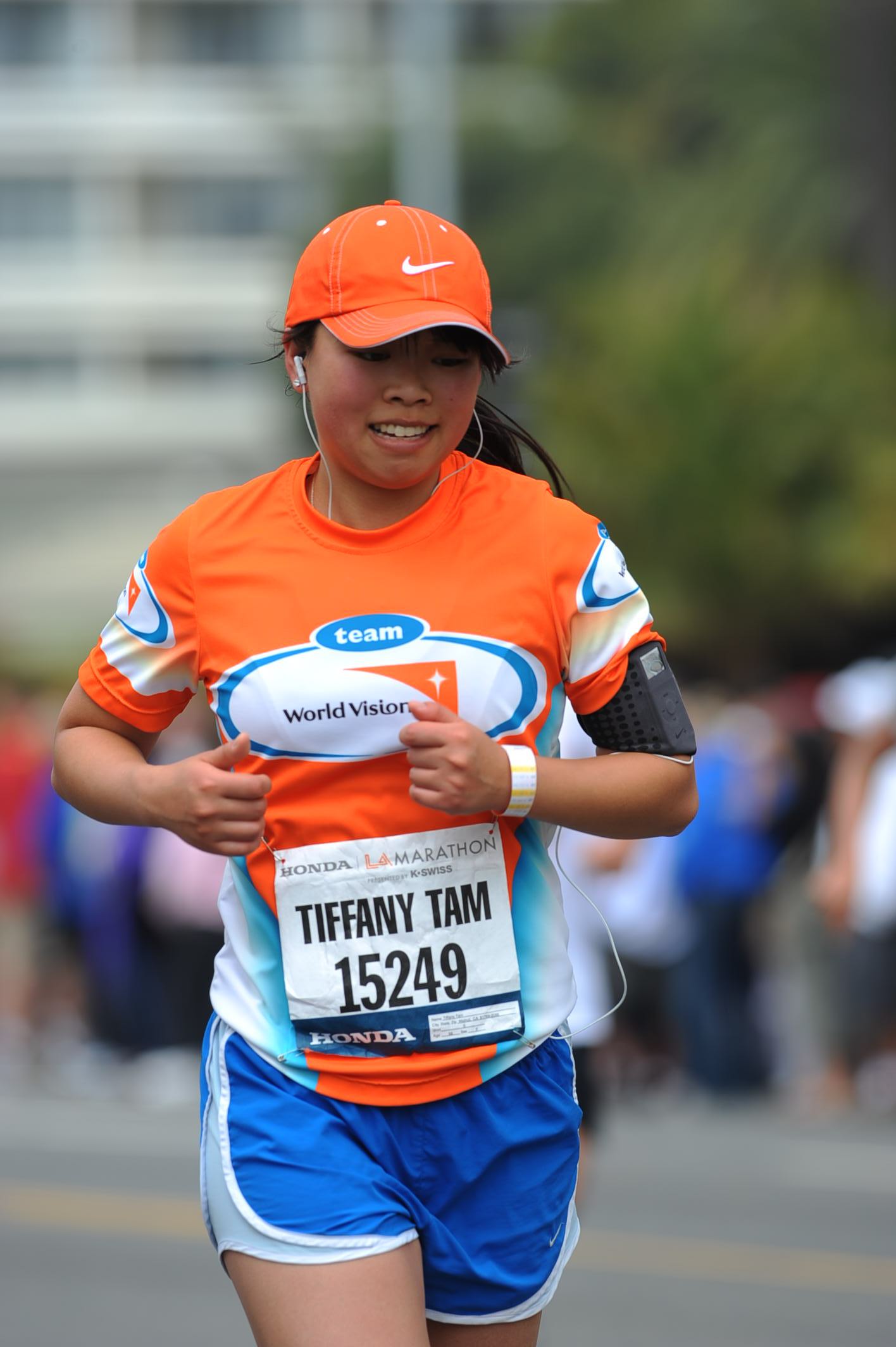As his tightening quads pushed through the last eight miles of the Los Angeles Marathon, Kellen Jones’ mind was focused on one thing.
“A 4×4 with animal-style fries from In-N-Out,” he said. “That was the only thing I was thinking about in those last miles. I was really, really hungry.”
Jones, a geography student who completed his degree last quarter, promptly got his burger and fries after the race.
On March 21, Jones was one of a record 25,000 people who competed in the 25th annual Los Angeles Marathon. This year marked the marathon’s inaugural “Stadium to the Sea” course, a route that stretched from Dodger Stadium to the Santa Monica Pier and included a sprint by Westwood.
“To run from Dodger Stadium through the historical areas and landmarks of L.A. and then to finally make it to Santa Monica ““ it made it seem like a bigger achievement because you get somewhere instead of running in circles around L.A.,” Jones said.
The first-time marathon runner was also one of many UCLA Navy ROTC members who ran, including Tiffany Tam, a fourth-year biology student, who ran to make good on a spur-of-the-moment New Year’s resolution and to fundraise for World Vision, a Christian humanitarian organization.
Tam, who finished with a 4:39 time, said the new route exposed her to a Los Angeles she had never seen before.
“It was really awesome to go from point A to point B and through a lot of the places I hadn’t seen from the street level,” she said, mentioning interesting vantage points of the Hollywood sign and Rodeo Drive.
“You wouldn’t usually be sweaty and running going down Rodeo Drive,” Tam said, laughing.
Both Tam and Jones acknowledged Barret Schlegelmilch, a third-year astrophysics student and fellow Navy ROTC member, for preparing a marathon training routine that complemented their already rigorous weekly Naval physical training.
“There were a lot of Navy ROTC members who were running for the first time, so I created a basic training schedule for everyone to follow: individual runs on the weekdays and long runs on the weekends, which we would all try to do together for the team aspect of it,” said Schlegelmilch, an experienced sub-four-minute mile runner with 11 marathons under his belt, including Boston and Vancouver.
In spite of the miles they accrued during training runs squeezed into the winter quarter, Tam and Jones eventually hit the dreaded runner’s wall, a drop in glycogen, or stored energy, within the muscles that can slow down even the most experienced runners. Tam experienced two: one around mile eight and another around the mansion-lined pavement of mile 18, Beverly Hills.
“In the beginning, there were a lot of downhills ““ slight uphills and then downhills. The stretch in Beverly Hills was just really flat and long. I was in a lot of pain,” she said. “Luckily, I didn’t cramp so I could still move. It was just my muscles felt really, really tight, like verging on cramping. I was the most scared of walking and twisting an ankle.”
Tam credits gel spray, an iPod filled with No Doubt and nearing Westwood with giving her the second wind she needed, even if in the latter she was met with an unavoidable rash of red and gold.
“Along Santa Monica Boulevard, I was hoping to see more Bruins, but it was mostly people with USC sweatshirts. There was a USC marathon team running, too, so for a stretch, I was running behind a girl who had a “˜Fight On’ T-shirt,” she said. “It was really annoying.”
Jones, who ran most of the race alongside a friend who had hurt his knee, said he pulled out of his own runner’s wall between Westwood and Santa Monica, enabling him to run the last 8 miles at a faster pace than he had started at.
“My friend said he was going to walk the rest, so I gave it all those last 8 miles and gained forty minutes,” Jones said. “I finished at 5:23 and hobbled over to get my medal.” After finishing, Jones waited an hour and then went back on the course to finish alongside his friend.
All three said they hope to continue to run the marathon in years to come and that the redesigned route will return, too.
“It’s probably the best route to see L.A. and definitely still the best race in Los Angeles. You can’t really compare anything to the Boston Marathon, but with all the neighborhood support on this new route, L.A. is definitely No. 2,” said Schlegelmilch, who is set to run the Boston race in April and finished this one with a 3:46 time.
Jones said he was amazed by the generosity of the people who came out of their homes to hand out bananas and oranges. In Echo Park and Silver Lake, places he had never visited before, he was given bottles of water and high-fives from locals.
“It shows that the marathon really brings Los Angeles together,” he said. “The route was absolutely awesome. My run started off foggy and ended with a cool breeze and thousands of people I didn’t even know calling my name from my runner’s bib in Santa Monica.”
